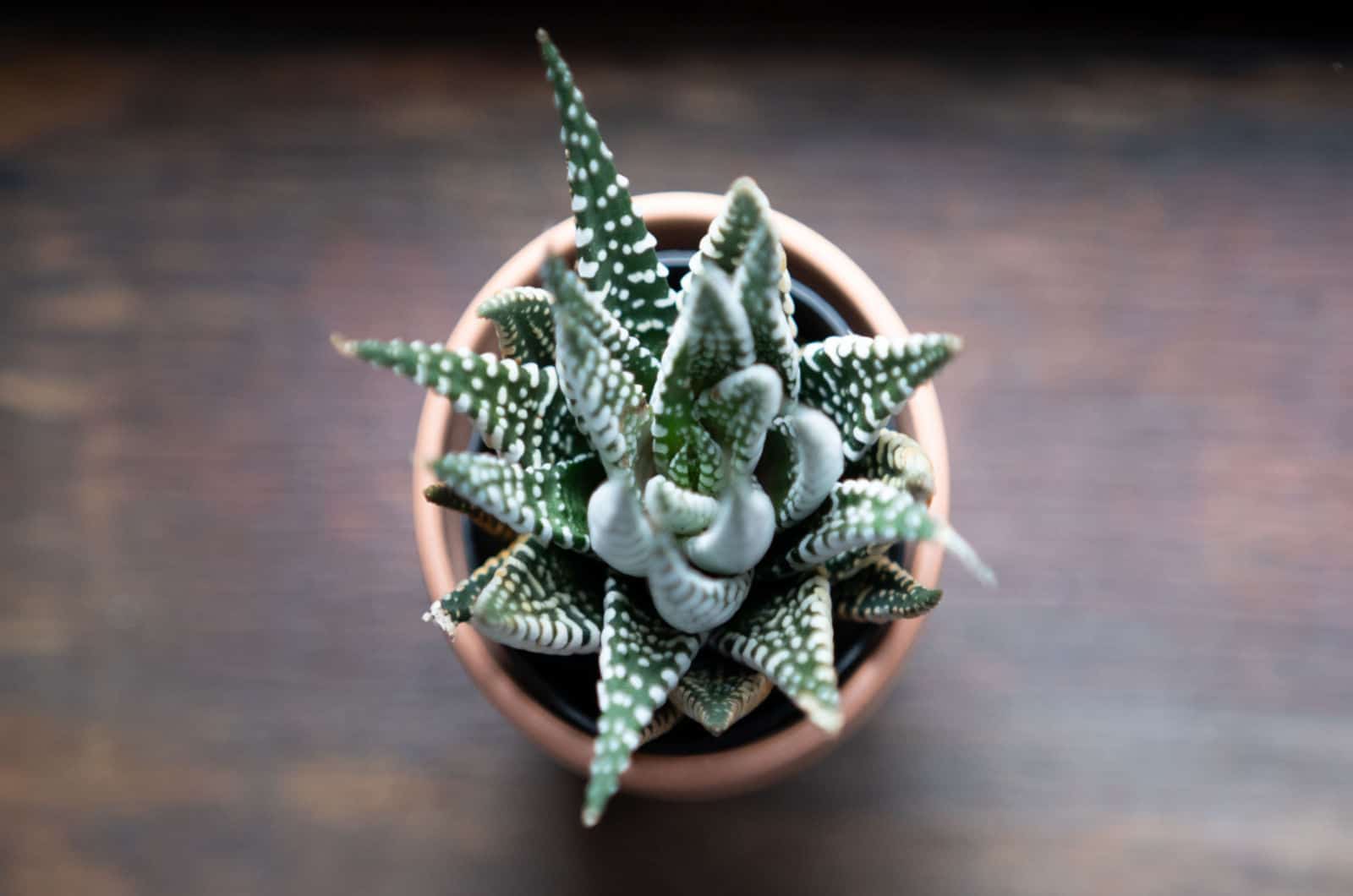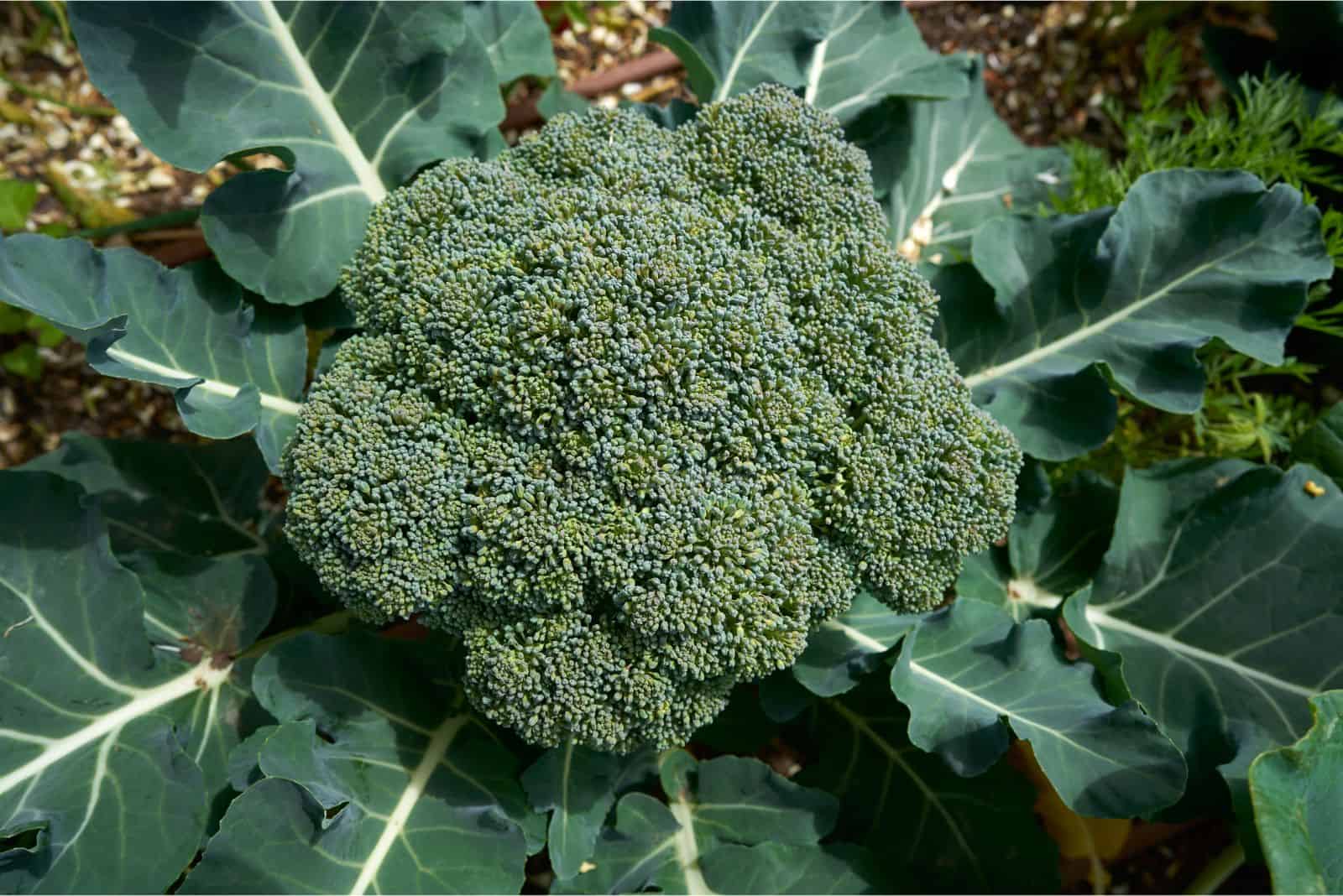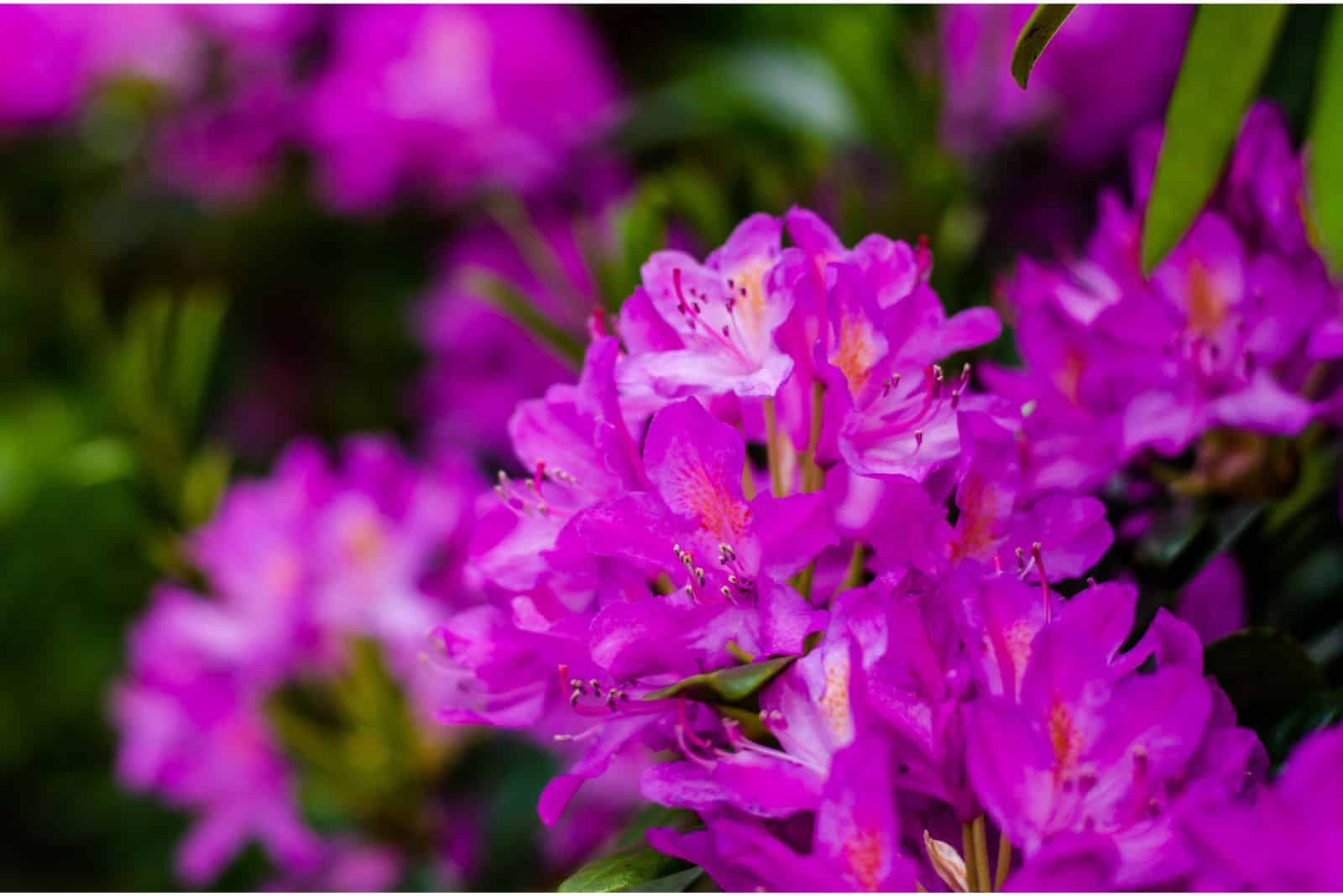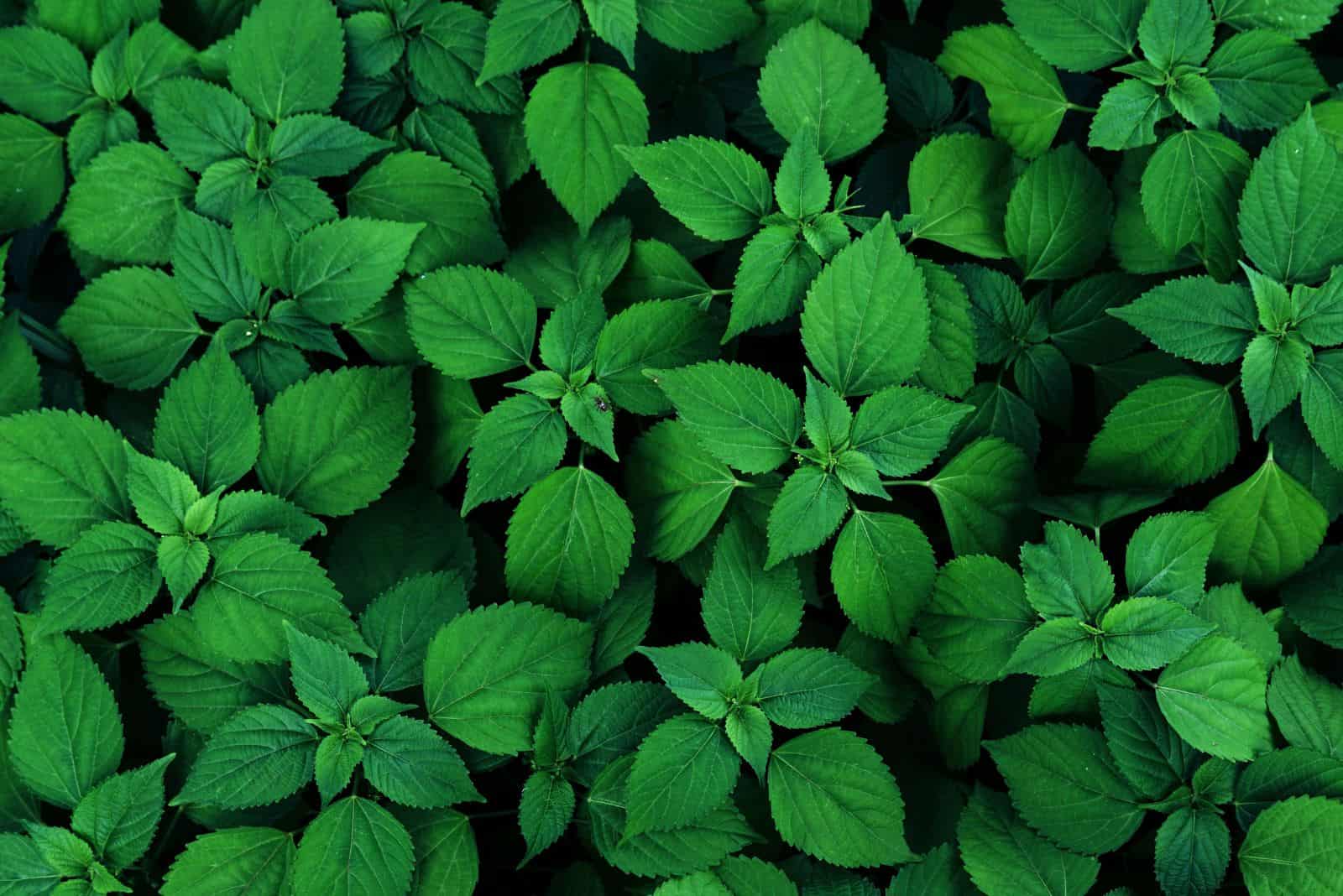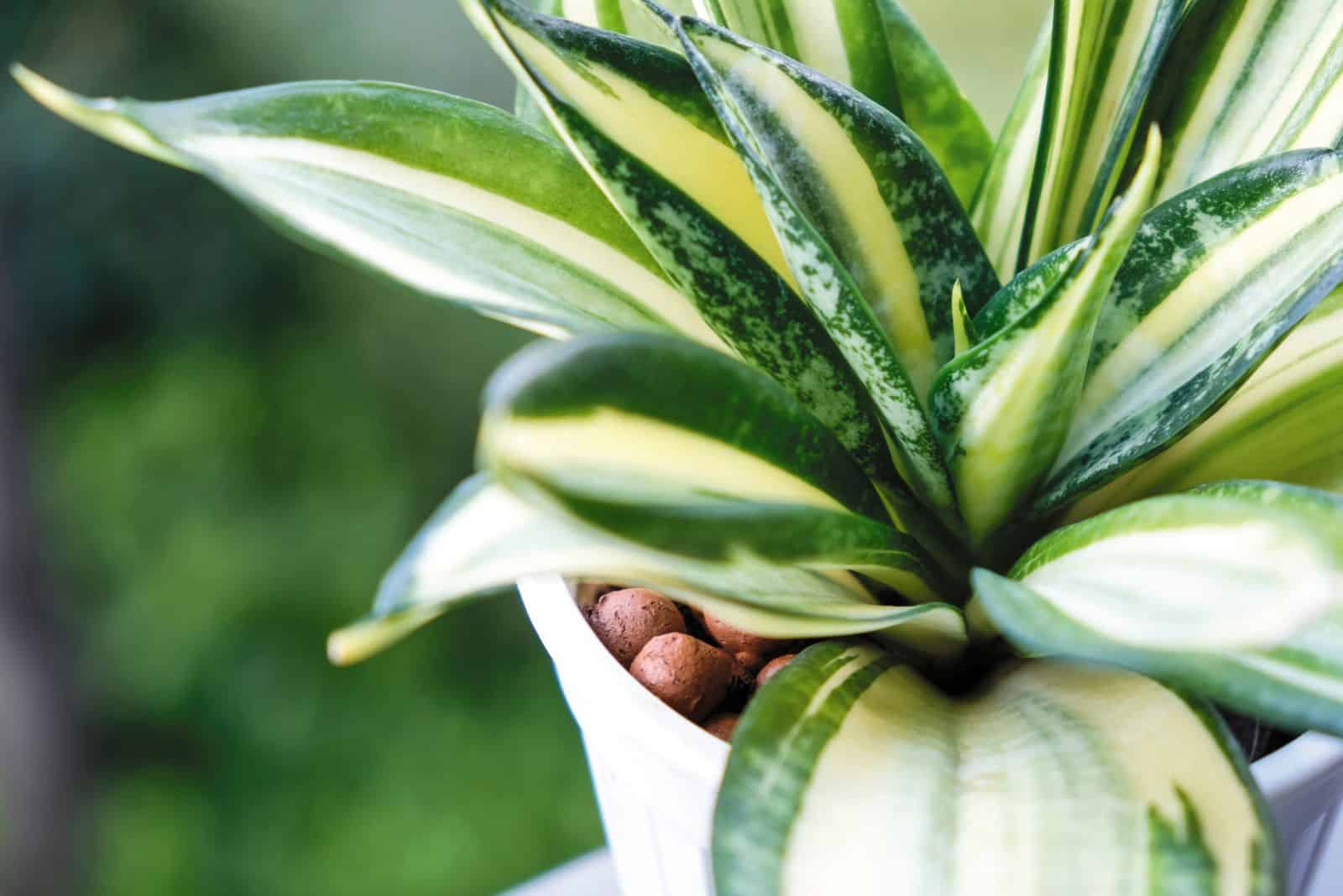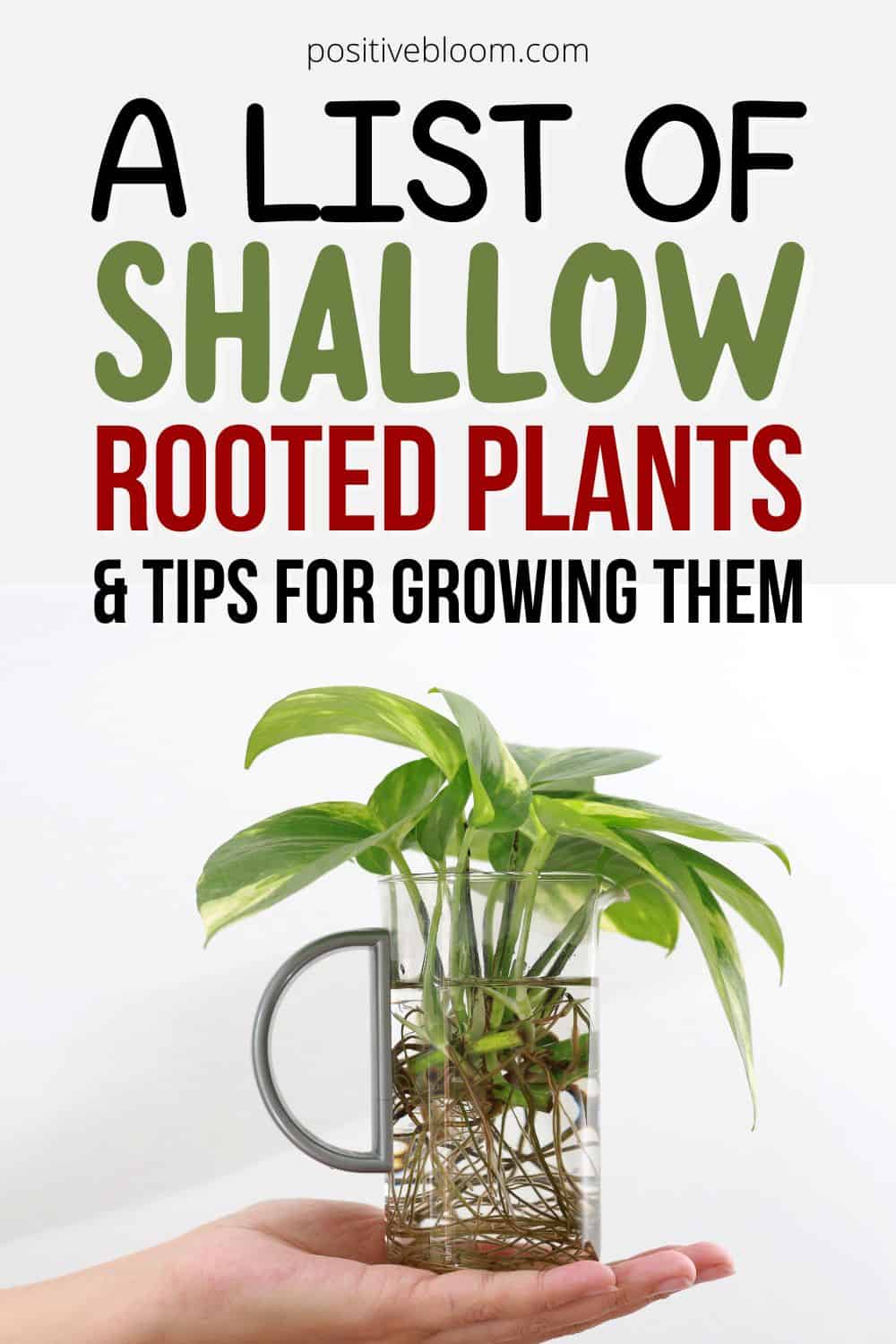When I was a beginner gardener, a wise man told me to start a garden bed first. I was pretty curious because it didn’t make any sense to me at the time.
I thought that the way to start gardening was by digging holes and planting seeds; I didn’t think much about the types of plants I should grow.
I also didn’t know that I could save space if I grew shallow rooted houseplants (smaller pots, smaller plants).
But the thing is, shallow rooted plants are actually the best choice for when you first start growing plants, especially for small gardens.
This is why you should choose your plants according to their type of roots.
In this article, I will show you lots of great shallow rooted veggies, herbs, and houseplants, all of which are pretty easy to grow and will look amazing (some even taste great!).
Shallow Rooted Plants
The plant world may be hard to wrap your head around in the beginning – so many families, genera, species, and plant parts – it’s seemingly never ending!
Once you start growing plants, you will quickly learn the ropes, however.
The first thing to remember is that plant leaves, stems, and flowers can’t be produced if they don’t have enough food.
They receive food from their roots, and plants may have shallow or deep roots. For example, cucumbers only have one root – the taproot.
These roots grow deep and will take up a lot of space below the surface of the soil.
On the other hand, some plants have shallow roots that only take up a small space below the surface.
Vegetables such as broccoli, kale, spinach, and radishes have these types of roots. Flowering plants such as azaleas, hostas, salvias, hydrangeas, or petunias also belong to the category of shallow rooted plants.
Additionally, herbs such as mint, rosemary, and basil, as well as houseplants like snake plants, panda plants, and some succulents also have shallow root systems.
Let’s get into details!
Shallow Rooted Vegetables
Let’s start with veggies that need shallow soil. A lot of plants from the Brassicaceae family, such as broccoli, cabbage, and kale, share this feature.
You can also grow radishes, chard, spinach, or onion if you decide to go for shallow rooted veggies.
Broccoli
You will notice roots developing in the second broccoli growing stage. Interestingly, broccoli roots start growing at great depth, but as the plant matures the root growth rate slows down.
You can grow broccoli from stems or seeds, but the essential thing to understand about these veggies is that the depth of the root system also depends on the variety.
Broccoli needs a lot of nutrients, which means that regular fertilization is the best way to encourage growth.
Keeping the soil moist is also essential for broccoli plants, so water them about once a week.
Kale
Kale is another veggie suitable for shallow pots, and thrives even in chilly weather.
Fill a pot with 6-8 inches of appropriate potting mix and plant your kale at a depth of about half an inch.
When planting, the only thing to pay attention to is leaving enough space between each kale plant – about 4 inches should work well for smaller varieties.
Keep your kale out of high temperatures as it may cause them to taste bitter, decrease their growth rate, and produce low-quality crops.
Due to their shallow roots, kale can’t tolerate waterlogged soil and is extremely susceptible to root rot.
Try to keep the soil moist, but never soggy.
Spinach
Another shallow-rooted plant is good old spinach. You don’t need to be a professional gardener for your spinach to grow well.
This is an ideal veggie for beginner growers because you can grow them in containers. Purchase a 6-8 inch deep pot and place the spinach seeds in it. New plants should grow quickly, so you can harvest spinach before you know it!
The number of spinach plants you can grow in the same container depends on its width.
Spacing is also important for spinach – you’ll need to leave 5-6 inches between each plant.
Apply a slow-release fertilizer and water the plants frequently. Your spinach will need a lot of full sun, so make sure to find a good spot.
When grown indoors, spinach may require grow lights.
Radishes
Radishes are annual plants, and even though the crops are below the soil surface, these plants don’t need deep soil.
Radishes are ideal for container gardening, and grow well with other plants in containers as they help keep pests away from other veggies.
These plants won’t tolerate shade, so you’ll need to find a sunny spot. For optimal growth, apply fertilizer rich in phosphorus.
Overly wet soil is a big problem for radishes, especially for its seeds, so try not to overwater them unless you want your radish to die!
I use drip irrigation systems and highly recommend this method to all growers.
Cabbage
Although cabbage may look like a pretty large plant, what happens below the soil line is entirely another story.
The length of cabbage roots mainly depends on the variety, but standard cabbage varieties have approximately 18-30 inch deep roots.
Chinese cabbage has roots that are around 2 inches deep.
The fact is that shallow rooted plants require frequent watering. Still, cabbage plants can withstand longer periods of drought, unlike their cousin broccoli.
Cabbage requires more frequent watering at the end of the growing season because underwatering may cause the heads to split.
Add nitrogen-rich fertilizer to get the tastiest crops ever!
Onion
Onions are another plant with shallow roots, and these biennials can be found in almost every vegetable garden.
Onions go through 10 growing stages pretty quickly if you meet all their requirements. Don’t worry – you won’t have to spend too much time caring for your onions.
Onions are acid-loving plants and require loamy soil with good aeration. They are also sun-loving plants – with some varieties needing 14 hours of direct sunlight per day!
Spacing plays a great role in onion growing, and you should leave about 2 inches of soil between the onion seeds.
Additionally, you’ll need to add about 2 inches of water every week if you want your onion to reach maturation.
Garlic
Garlic is on my top five list of veggies due to its taste (not smell) and how easy it is to grow. Some shallow rooted garlic varieties develop roots only two inches long.
You need to fertilize garlic regularly and keep an eye out for pests that could ruin your plans.
If you live in climates susceptible to frost, mulch the soil to help your garlic overwinter. After the danger of frost has passed, you can remove the mulch.
Garlic is very competitive when it comes to nutrients, so avoid planting it near other plants that require the same amount of nutrients.
Arugula
Arugula roots grow from 12 to 18 inches long. This veggie requires little maintenance.
It prefers rich, well-draining soil with a pH of between 6.0 and 6.8. Additionally, these plants prefer moist soil, so avoid letting the soil completely dry in between waterings.
I grow my arugula in raised beds, and they seem to really like it.
Flowering Plants With Shallow Roots
That certainly was a lovely list of shallow rooted veggies! Now let’s take a look at a list of shallow rooted flowering plants.
Rhododendron & Azalea spp.
Planting shallow rooted azaleas can be a little tricky because the roots may ‘sink’ if planted too deep.
I recommend mulching the plants with something like pine needles. This way, you’ll both protect the roots and help the soil retain moisture.
You’ll need to deadhead your rhododendrons and azaleas after blooming. Your goal is to encourage vegetative growth.
It may be challenging to overwinter these plants; the best thing would be to add layers of mulch as the winter approaches or protect the plants with burlap.
Salvias
In my opinion, salvias are the ultimate low-maintenance plants. They need a lot of full sun to produce their beautiful red/white/yellow/purple/pink flowers.
These types of plants have shallow root systems, so add compost and garden grit to ensure sufficient nutrients and good drainage.
As a matter of fact, compost is the only fertilizer salvia needs.
Lilacs
Lilacs are old-school flowering shrubs or trees that have pretty shallow root systems. This is surprising as we usually think of deep roots in connection with trees.
Lilacs are well-known plants due to their fragrant and beautiful blossoms. Luckily, lilacs aren’t fussy plants and could probably grow just fine on their own.
You’ll only need to add water if there’s not at least one inch of rainfall per week.
These plants are susceptible to overfertilization, so I recommend applying triple 10 fertilizer – ideally in late winter.
However, adding compost and mulch will ensure your lilacs get sufficient nutrients and also help the soil retain moisture.
Hostas
Hostas grow well in shady areas, but I recommend giving them dappled sunlight. These plants aren’t picky about their soil type, they simply require good drainage and despise clay-based soil.
I also recommend amending the soil with organic matter or using regular potting soil if you grow these plants in pots.
Your hostas won’t do well in longer periods of drought, so never let the term “drought-resistant” fool you.
Another great thing about these plants is that they aren’t affected by humidity or temperature; they just keep growing.
The main thing to pay attention to when it comes to weather is wind, which can damage hostas.
If you choose to feed your hostas, I recommend using compost only.
Periwinkle
Another shallow rooted plant, the famous periwinkle from the Vinca family. These plants are mostly grown as groundcovers.
If you are a beginner grower, I recommend growing periwinkle because this hardy perennial can survive even the harshest conditions.
You can encourage growth by providing enough dappled sunlight and rich soil.
But, as I said, periwinkles grow well in any conditions.
You can choose between smaller (minor) and bigger (major) varieties.
Barrenwort
Another shallow rooted perennial is a shade-loving epimedium commonly known as barrenwort.
Heart-shaped leaves and colorful flowers make this unusual plant desired by many gardening enthusiasts.
These plants thrive in USDA plant hardiness zone 3-9 and can survive pretty harsh conditions.
Barrenwort is also drought-tolerant, which makes it a beginner-friendly plant. Barrenwort enjoys company, so plant some flowering bulbs near it for best results.
Bugleweed
Bugleweed is a very common shallow rooted plant, which makes it a great groundcover.
A humid environment and abundant sunlight will encourage your bugleweed to grow healthy and thrive.
However, be extremely cautious with bugleweed as it’s considered invasive in some parts of America.
Dark green leaves and colorful flowers make this plant very attractive. If you ensure the correct conditions, bugleweed can be your best friend.
Lavender
When it comes to the lavender plant, it can be almost impossible to decide between the color of the flowers and their scent!
Lavender doesn’t have deep roots and thrives in shallow soil. Although lavender may grow well in partial shade, I suggest exposing it to full sun as much as possible.
Make sure temperatures are within the range of 70 and 75 degrees Fahrenheit.
As far as soil is concerned, your lavender will grow well in almost all types – but only decide your watering schedule after choosing the soil type.
There’s no need to boost growth or supplement the soil with organic matter.
Petunia
The trumpet-like flowers of petunia plants put them at the top of many most-beautiful-plants lists.
Petunia plant roots are pretty shallow, so you’ll need to pay close attention to moisture as the soil may dry up quickly.
If you want to avoid problems with dry soil, I recommend adding organic matter to the substrate as it will help with water retention.
Your petunias won’t survive anything lower than 40 degrees Fahrenheit, so it’s important to ensure they get full sun and are fertilized regularly to see the true beauty of their blossoms.
Zinnias
If you are looking for a plant to serve as a border, zinnia plants are the ideal choice.
Zinnias adore the sun, so make sure to find a good spot for them.
Don’t leave zinnias in soil that’s too wet because the shallow roots may rot quickly.
Zinnias can grow in different types of soil. Even poor soil will provide your plant with all it needs.
Hydrangeas
Unlike Zinnias, hydrangeas prefer organic matter and won’t grow well in poor soil that retains too much water.
Hydrangeas are also plants that have shallow roots. They aren’t heavy drinkers; 1 inch of water a week should suffice.
You can apply fertilizer to your hydrangeas, but the type of fertilizer you need depends on the hydrangea variety in question.
The best idea would be to perform a soil test before you start adding supplements.
Herbs With Shallow Roots
Let’s look at a list of popular herbs perfect for both outdoor gardening and indoor container gardening.
Mint
Mint is a low-maintenance perennial with a distinctive scent belonging to the family Lamiaceae.
Mint, or Mentha spp., is a very common plant. If you are a fan of spicy herbs, mint is a great option as it’s one of the hardiest plants and can grow anywhere.
A special thing about mint is that its stems grow upwards, bend over when mature, and then produce roots where they come into contact with the soil.
This means mint spreads at a fast rate, so it would be a good idea to control its growth unless you want an entire garden bed of mint!
The best idea would be to find a place where you can grow just mint as it will be easier to control it.
Partial shade or full sun, rich soil (to skip fertilizing), high humidity, and watering during very dry periods are what your mint needs.
If you live in USDA hardiness zone 3, I recommend growing the peppermint variety.
Rosemary
If you have tried any Mediterranean dishes, I’m sure that there was some rosemary in it.
It really makes any dish tastier, and you can grow rosemary in your garden! This herb is perfect for container gardening as well.
It thrives in warmer climates and requires a lot of full suns. This long-lasting plant also requires soil with excellent drainage if you want it to last.
Rosemary doesn’t require much fertilizer; adding compost or liquid balanced fertilizer to the soil should fulfill the needs of this fragrant plant.
Basil
I bet you thought basil was Italian, but it’s actually an Indian herb!
If you live in USDA hardiness zones 10-11, you can grow basil as a perennial.
On the other hand, basil is grown as an annual plant in all other zones.
When growing this herb, the aim should be to promote bushy growth and produce many leaves.
However, this may be challenging because you’ll need to trim the top leaves as soon as the plant starts maturing.
If you let your basil bloom it will concentrate on producing seeds rather than leaves, and you will be left with many seeds but only a few leaves.
As well as trimming, you’ll also need to provide your basil with regular watering and a couple of hours of full sun each day.
You can help the soil retain moisture by adding a nutrient-rich mulch.
Unlike other shallow rooted plants, your basil will need some food in order to produce tasty leaves.
Shallow Rooted Houseplants
If you would like to add a couple of shallow pots to your home decor, this is a list of plants you can grow in them.
Snake Plant
Although the term snake isn’t often heard with the term plant, the snake plant has become one of the most commonly grown houseplants in the world.
Of course, it has nothing to do with snakes, nor does it attract any; it’s actually a low-maintenance plant with breathtaking, variegated, succulent-like leaves.
Many wonder how fast snake plants grow because it may sometimes seem like they aren’t growing at all.
When they reach their mature size they get pretty tall, so it’s surprising that these plants have shallow roots.
This shallow rooted perennial thrives in soil with good drainage and bright indirect light.
It’s easy to overwater this plant due to its shallow roots, so if you notice the leaves of your snake plant splitting you should change your watering habits.
Snake plants tolerate different temperatures, but it would be best to set the thermostat between 65 to 85 degrees Fahrenheit.
Boost the growth twice in the growing season with 10 10 10 fertilizer diluted to half strength.
Panda Plant
The kalanchoe tomentosa is a Madagascar native plant. If you have children, they will love this plant due to its cheery appearance. However, please keep it away from cats and dogs as the panda plant is toxic to them.
This shallow rooted succulent prefers bright indirect light, but will also benefit from a little direct sun in the morning.
Bear in mind that succulents store water in their leaves, so they don’t need much water – especially in winter. Never leave shallow rooted panda plants sitting in waterlogged soil.
Moderate humidity and soil made for succulents is a great combination that your panda plant will really appreciate.
Aloe Vera
Anyone who hears about the benefits of the soothing gel from aloe vera leaves will want to grow this plant, which is likely the reason aloe is commonly seen in many households.
Another thing that makes aloe a great houseplant is that it’s easy-to-grow.
It requires sandy and acidic soil, so I recommend purchasing a ready succulent soil mix to be on the safe side.
The amount of light your aloe needs depends on where it’s growing. For example, outdoor aloes benefit from direct sunlight in the morning and a little bit of shade in the afternoon.
On the other hand, indoor aloes don’t take direct sunlight well, and can even cause burns on the leaves and damage the plant permanently.
Zebra Plant
If you like a challenge, I have the perfect plant for you! Although the zebra plant is often thought of as easy to grow, there are a couple of things that may go wrong.
First, it needs warm temperatures (over 60 degrees Fahrenheit) and high humidity (70% should suffice). Keep your zebra plant soil moist and avoid direct sunlight to avoid killing it.
On the other hand, you must also keep it away from complete shade as it won’t bloom without light.
You will also need to fertilize your zebra plant every two weeks during the growing season.
If you meet these requirements, your shallow rooted zebra plant will thrive in no time.
Prayer Plant
One of the most colorful shallow rooted plants is the popular Maranta leuconeura, also known as the prayer plant.
If you decide to grow this plant, you’ll need to ensure warm temperatures, high moisture, good airflow, and plenty of food!
These are the conditions found in greenhouses.
Prayer plants don’t like wet soil and are prone to root rot.
Soil with good drainage is essential. Additionally, feed your plant every two weeks during the growing season with an all-purpose, water-soluble fertilizer.
Wrapping Up
I’m sure this article inspired you to grow lots of shallow rooted plants!
I highly recommend these plants to beginner growers because they are the ‘hardest’ to kill and easiest to repot houseplants.
This is a very important feature; you can quickly remove the plant from its pot and revive it in case you accidentally overwater it, for example.
Now, get yourself at least one shallow rooted plant and enjoy growing it!
Until next time!
Like this post? Share or pin it for later!

